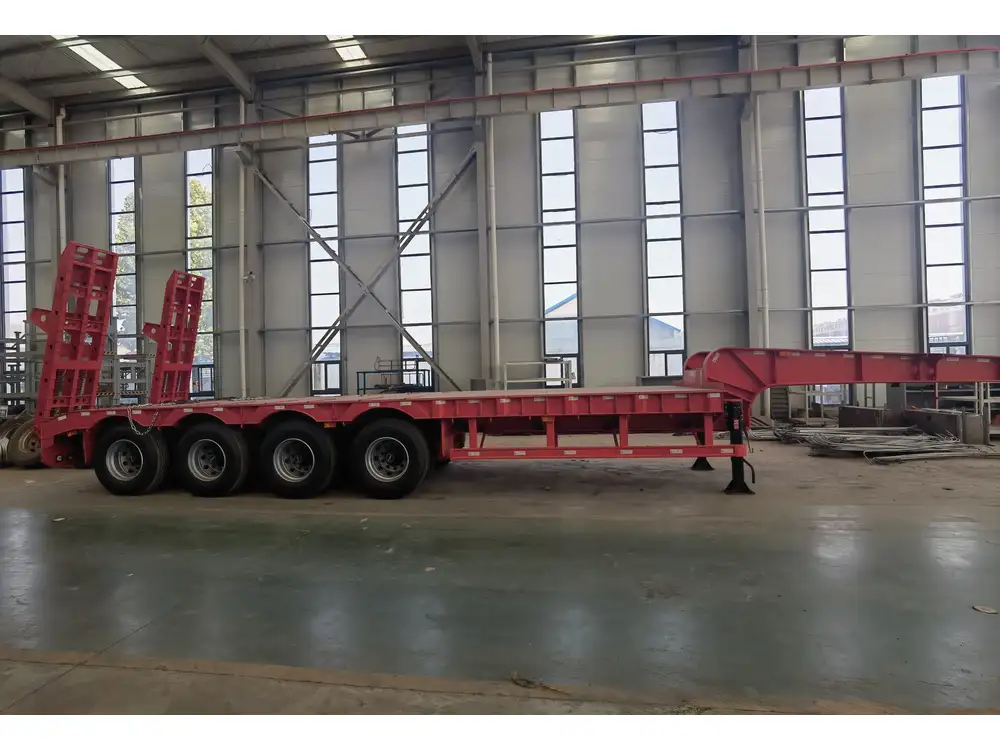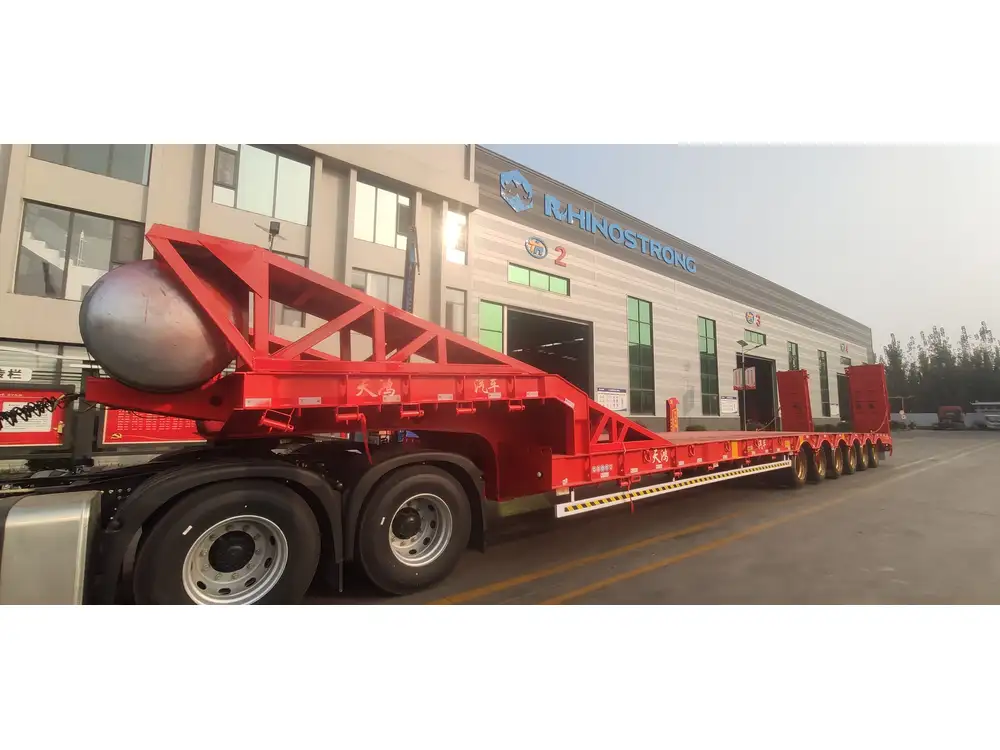When it comes to transportation logistics, the specifics of flatbed trailer dimensions can significantly influence operational efficiency. Among the key factors in determining how long a commercial flatbed trailer can be are regulations, load capabilities, and end-use applications. Understanding these aspects is crucial for manufacturers, fleet managers, and transport operators.
Regulations Affecting Flatbed Trailer Length
Federal Regulations
In the United States, the Federal Highway Administration (FHWA) provides essential guidelines concerning trailer dimensions. According to Title 23 of the Code of Federal Regulations, the maximum length for a commercial flatbed trailer generally should not exceed 48 feet for trailers. However, exceptions exist—such as when vehicles are equipped with additional equipment or when there is the need for specialized transport.
This leads to crucial differentiation based on the flatbed configuration:
| Category | Standard Maximum Length | Special Exceptions |
|---|---|---|
| Standard Flatbed Trailers | 48 feet | Extended for specialized applications |
| Stacked Trailers | Up to 53 feet | Allowed under specific cargo provisions |
| Multi-Axle Trailers | 59 feet or more | Subject to state-by-state regulations |

State Regulations
State laws often specify trailer length variations that can differ substantially from federal regulations. Each state has distinct rules which may add additional requirements or grant certain exceptions. Operators must be familiar with the regulations specific to each state they are traversing, particularly regarding:
- Overhang Limitations: Many states impose restrictions on overhang—how far cargo can extend beyond the trailer.
- Width and Height Regulations: While length is essential, compliance with width and height regulations is equally critical.
- Permit Requirements: Some states might necessitate special permits for trailers exceeding standard lengths.
Example: State Length Regulations Breakdown
| State | Max Trailer Length | Special Notes |
|---|---|---|
| California | 53 feet | Allowances for certain configurations |
| Texas | 59 feet | Specialized vehicles only |
| Florida | 48 feet | Restrictions on overhang and load limits |
| New York | 53 feet | Specific permit requirements for oversized |
Types of Commercial Flatbed Trailers
Understanding the types of flatbed trailers available can help clarify potential length variations based on specific needs. Here are the primary types:
Standard Flatbed Trailers:
- Typically 48 feet long.
- Designed for transporting various freight types, from lumber to steel.
Extendable Flatbed Trailers:
- Can extend up to 53 feet or more.
- Commonly used for oversized loads which require flexibility in length.
Step Deck (Lowboy) Trailers:
- Deck height allows for higher cargo capacity while maintaining roadway clearance.
- Generally maintain standard length limits.
Double Drop Trailers:
- Two drops in the trailer profile allow for taller loads.
- Length usually adheres to the 48 to 53-foot regulations.
Understanding these configurations allows operators to select the appropriate trailer for specific cargo while adhering to legal limits.

Implications of Trailer Length on Transport Operations
Load Capacity
A pivotal concern when considering trailer length is the effect on load capacity. Generally, longer trailers can distribute weight more effectively and accommodate larger cargo volumes, but they also may introduce complexities related to weight distribution, especially on multi-axle configurations.
- Weight Distribution: Trailers that are extended beyond normal lengths often require careful planning to ensure proper weight distribution. This helps in preventing overload on any axle, which could lead to compliance violations, safety risks, and increased wear on the vehicle.
Maneuverability and Accessibility
While longer trailers may offer increased load capacities, they can also lead to challenges in maneuverability. Transport routes may pose obstacles where longer trailers might have difficulty making tight turns or navigating urban environments.
For example:
- Urban Deliveries: In densely populated city areas, shorter trailers may be more efficient for deliveries due to lower turning radii.
- Rural Operations: Exiting highways may also present limitations where longer rigs may struggle to navigate sharp bends or narrow roads.

Cost Implications
Trailers that operate on the longer end of the spectrum may incur increased costs not only in terms of fuel consumption but also in maintenance and regulatory compliance:
- Fuel Efficiency: Longer trailers generally face increased wind resistance, translating to higher fuel costs.
- Insurance Rates: Insurance premiums may rise based on trailer dimensions and operational limits, impacting long-haul operators financially.
Selecting the Right Flatbed Trailer Length
Factors to Consider
When determining the appropriate flatbed trailer length, several factors must be taken into account.
Type of Cargo:
- Oversized loads necessitate trailers which can accommodate longer lengths for stability and safety.
Regulatory Compliance:
- Compliance with federal and state regulations regarding trailer dimensions should guide length choices.
Transport Routes:
- Anticipate the types of routes your trailers will operate on, as this will influence length decisions.

Usage Scenarios
| Scenario | Recommended Trailer Length | Justification |
|---|---|---|
| Construction Loads | 48 to 53 feet | Allows for heavy equipment transport |
| Lumber & Building Materials | 48 feet | Typically standard-sized loads |
| Heavy Machinery | 53 feet or more | For oversized machinery needing extra length |
Conclusion
Understanding the implications of flatbed trailer length is vital to running an efficient transportation operation. Knowledge of federal and state-specific regulations, alongside an awareness of the operational challenges associated with different lengths, empowers manufacturers and fleet managers to make informed decisions.
Matching trailer types with specific cargo needs while observing regulations ensures both compliance and operational effectiveness. As advancements continue in the transport industry, staying updated on regulations and best practices will help navigate the complexities of commercial flatbed trailer usage effectively.
By analyzing specific needs, regulations, and operational contexts, we can ensure the right balance between capacity utilization and regulatory adherence. Ultimately this fosters a well-structured system for all stakeholders involved in transport logistics.



